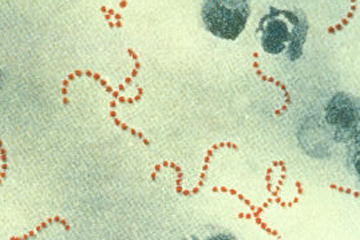How Flesh-Eating Bacteria Evolved To Be Deadly

The bacteria that cause the sometimes deadly "flesh-eating" infections evolved in just a few steps from bacteria that cause only minor illnesses, new research shows.
The bacteria known as Group A Streptococcus underwent four major genetic changes as it transformed into the type that causes the life-threatening disease called necrotizing fasciitis.
Understanding how this microbe turned deadly will help scientists understand how these infections arise, and could lead to vaccines or better treatments, the researchers said. [6 Superbugs to Watch Out For]
The flesh-eating bacterium is the same bacteria that causes strep throat, and infects more than 600 million people each year. The microbe infects only humans, and most of the infections are mild. But people infected with a rare strain of it can develop deadly infections.
Tracing a killer
"This is a process that can progress very rapidly, and very insidiously once it starts going," said James Musser, a genomic pathologist at Houston Methodist Research Institute in Texas and leader of the study detailed today (April 14) in the journal Proceedings of the National Academy of Sciences.
Most strains of the flesh-eating bacterium can be killed with penicillin or other antibiotics. But often, people with a deadly infection don't realize they have a severe infection until it's too late to treat, Musser told Live Science.
Sign up for the Live Science daily newsletter now
Get the world’s most fascinating discoveries delivered straight to your inbox.
In the study, Musser and his colleagues investigated how changes in the genetic sequence of flesh-eating bacteria enabled it to trigger an epidemic in late 1980s to early 1990s.
The researchers discovered four major steps in the microbe's transition from harmless to potentially fatal. They traced the emergence of the bacterium, identified the toxin that makes it deadly, and uncovered the final steps that led to an epidemic.
"For the first time, we really understand precisely the molecular evolutionary genetic events that gave rise to creating a new pathogen, which then caused an epidemic disease," Musser told Live Science.
Clues to epidemics
Armed with this knowledge, researchers may be able to develop vaccines, treatments and public health efforts to curb epidemics of the flesh-eating bacteria infections. More broadly, the knowledge could aid in identifying new deadly pathogens early on, before they cause epidemics.
Going forward, the team plans to suss out the common rules that lead pathogens to cause epidemic disease, and probe what genetic changes allow the microbe to severely sicken humans.
Follow Tanya Lewis on Twitter and Google+. Follow us @livescience, Facebook & Google+. Original article on Live Science.

Flu: Facts about seasonal influenza and bird flu
What is hantavirus? The rare but deadly respiratory illness spread by rodents










